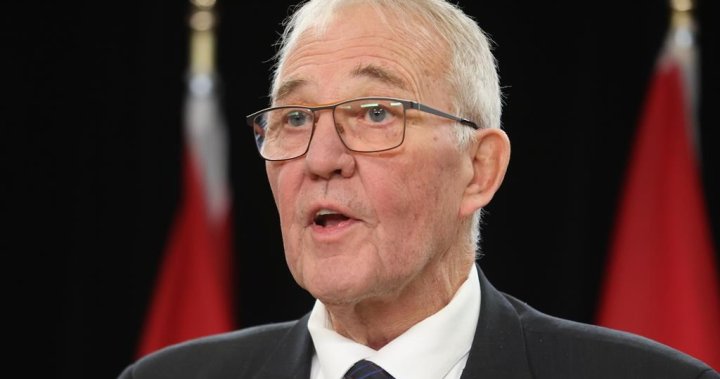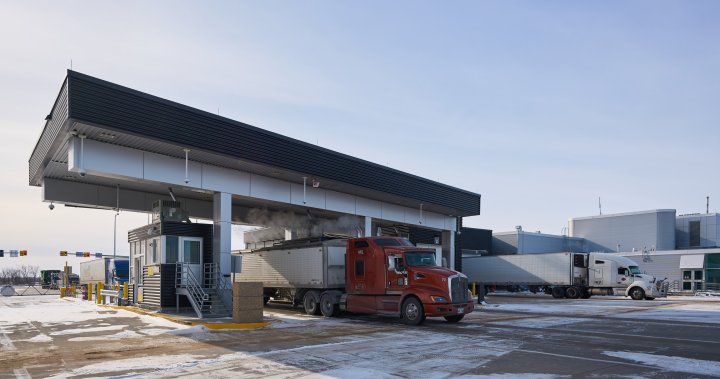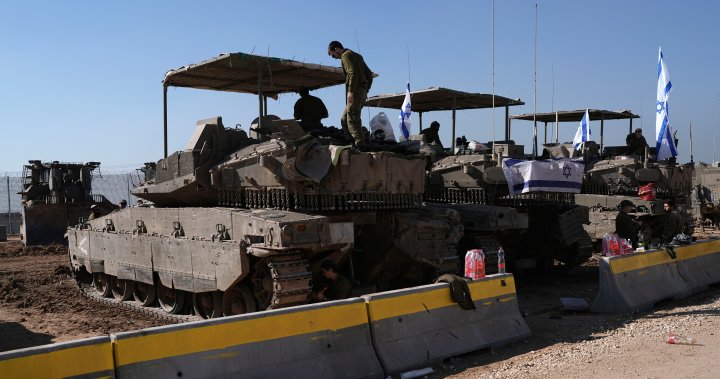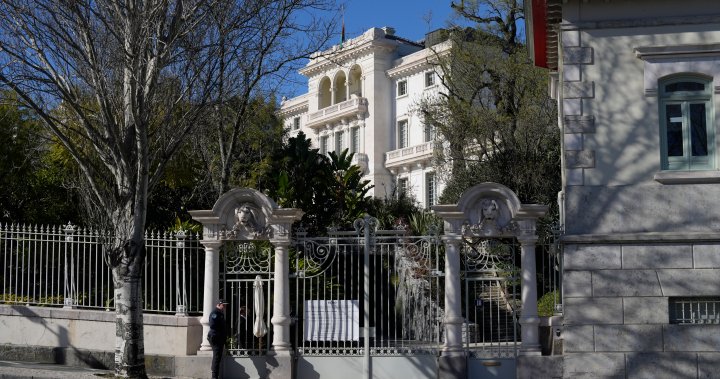The Qatari mediator announced on Saturday that the ceasefire between Hamas and Israel will go into effect on Sunday at 8:30 a.m. local time (0630 GMT), as families of hostages held in Gaza prepare to get news of their loved ones, and Palestinians prepare to receive freed detainees and humanitarian aid. . The groups rushed to prepare a wave of aid.
The Israeli Cabinet’s approval of the deal overnight, in a rare meeting during the Jewish Sabbath holiday, sparked a flurry of activity and a new wave of emotion as relatives of the hostages wondered whether the hostages would be returned alive or dead. It is expected that the names of the first hostages to be released will be announced later on Saturday.
The cessation of the 15-month-old war is a step towards ending the bloodiest and most destructive fighting ever between Israel and the Hamas militant group – and comes more than a year after the only other ceasefire was reached.
The first phase of the ceasefire will last for 42 days, and negotiations on the more difficult second phase are scheduled to begin in just over two weeks. After those six weeks, the Israeli security cabinet will decide how to proceed.
Story continues below ad
Israeli air strikes continued on Saturday, and the Gaza Ministry of Health said that 23 bodies had been transferred to hospitals in the past 24 hours.
“What is this truce that kills us hours before it begins?” asked Abdullah Al-Aqqad, the brother of a woman killed in an airstrike in the southern city of Khan Yunis. Health officials said the couple and their two children, ages 2 and 7, died.
Sirens sounded in central and southern Israel, and the army said it intercepted projectiles launched from Yemen. The Iran-backed Houthi rebels have intensified their attacks in recent weeks, describing them as solidarity with the Palestinians in Gaza.

Get daily national news
Get the day’s top political, economic and current affairs news, headlines, delivered to your inbox once a day.
In a post on the website
Muhammad Mahdi, a father of two children who was displaced from the Zaytoun neighborhood in Gaza City, said: “The first thing I will do is go and inspect my house.” He also looks forward to seeing his family in southern Gaza, but “is still worried that one of us might be martyred before we can meet.”

Palestinian supporters around the world are celebrating Netanyahu’s announcement that a ceasefire agreement has been reached
In the first phase of the ceasefire, 33 hostages are scheduled to be released in Gaza over a period of six weeks, in exchange for 737 Palestinian prisoners held by Israel. The Israeli Ministry of Justice published a list of the names of the prisoners, all of whom are young or female.
Story continues below ad
According to the ceasefire plan approved by the Israeli Cabinet, the exchange will begin at 4 p.m. (1400 GMT) on Sunday. The plan stipulated that three hostages would be returned alive on the first day, four on the seventh day, and the remaining 26 over the next five weeks. During each exchange, Israel will release Palestinian prisoners after the hostages arrive safely.
Trending now
-

TikTok ban upheld by US Supreme Court. Here’s what could happen next
-

A mother is upset with the school’s response after a 12-year-old overdosed on foods
1,167 Gazans who did not participate in the Hamas-led attack on October 7, 2023 that sparked the war will also be released. All women and children under the age of 19 from Gaza held by Israel will be released during this phase.
All Palestinian prisoners convicted of deadly attacks will be exiled to Gaza or abroad – some for three years and others permanently – and barred from returning to Israel or the West Bank.
The remaining hostages in Gaza, including male soldiers, are scheduled to be released in a second phase to be negotiated during the first phase. Hamas said it would not release the remaining prisoners without a permanent ceasefire and complete Israeli withdrawal.
Also during the first phase of the ceasefire, Israeli forces will withdraw to a buffer zone approximately one kilometer wide inside Gaza, along its border with Israel.
This will allow many displaced Palestinians to return to their homes, including in Gaza City and the isolated and largely destroyed north of Gaza. With most of Gaza’s population taking refuge in huge, dirty camps, Palestinians are desperate to return to their homes, even though many of them have been destroyed or severely damaged.
Story continues below ad
Gaza should also see an increase in food, medical supplies and other humanitarian aid. On Friday, trucks lined up on the Egyptian side of the Rafah border crossing with Gaza.
The Egyptian Ministry of Health said that two Egyptian government ministers arrived on Saturday in the northern Sinai Peninsula to supervise preparations for delivering aid through the Rafah crossing as well as the Kerem Shalom crossing and to receive the evacuation of wounded patients.
The ceasefire plan approved by the Israeli Cabinet stipulates that all trucks entering Gaza will be subject to Israeli inspection.
The Hamas-led October 7 attack killed about 1,200 people and captured about 250 others. There are still approximately 100 hostages in Gaza.
Israel responded with an attack that killed more than 46,000 Palestinians, according to local health officials, who do not distinguish between civilians and militants, but say women and children make up more than half of the dead.
& Edition 2025 The Canadian Press

















